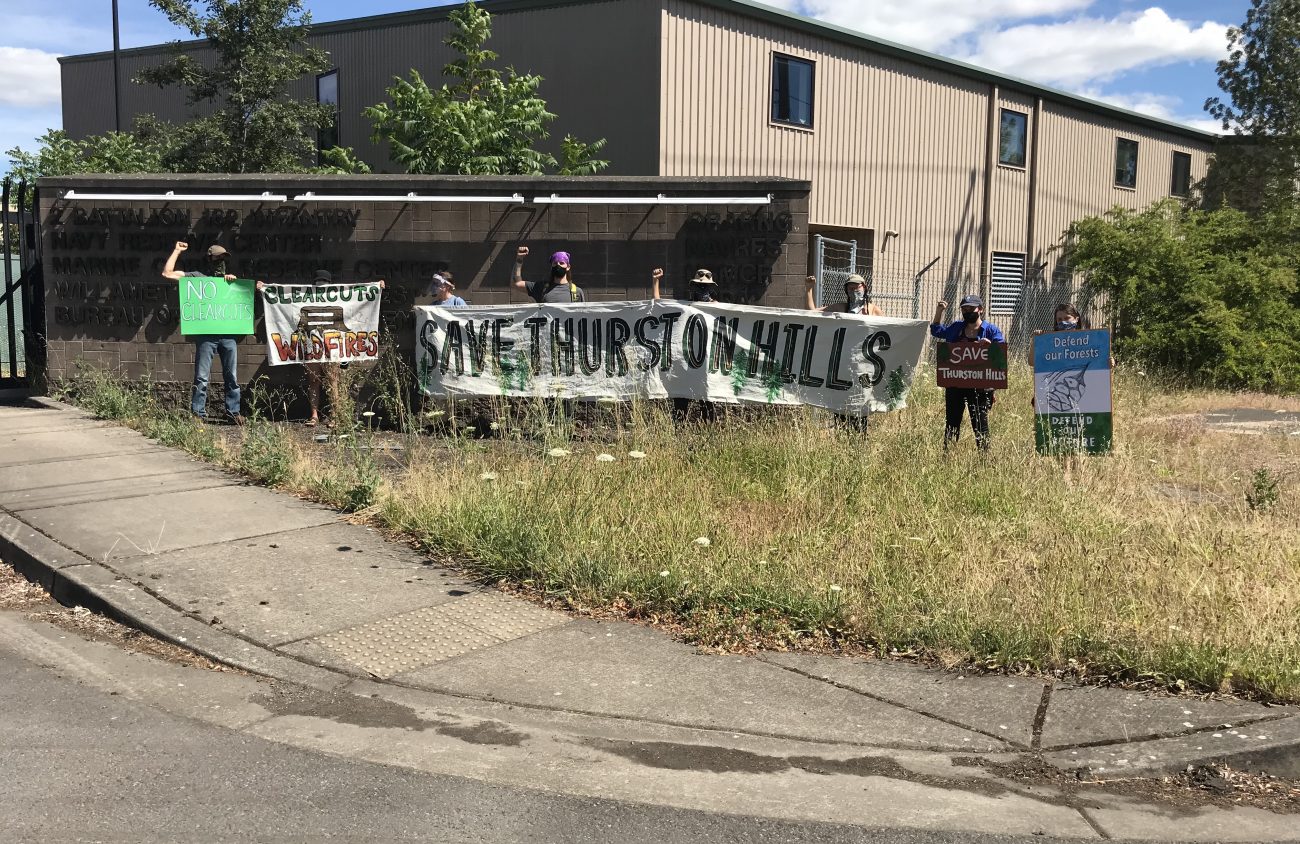Once again, the Bureau of Land Management’s controversial plans to log in a recreation area at Thurston Hills outside Springfield has been stopped in federal court.
The BLM’s plans to log at its property near the Thurston neighborhood has become a saga, full of federal court filings and revised plans. On June 4, Federal Magistrate Judge Mustafa Kasubhai issued the latest federal decision, a split decision, which Eugene nonprofits, residents and the timber industry are considering a win.
Kasubhai’s ruling agrees with Cascadia Wildlands’ and Oregon Wild’s claims that the federal agency failed to preserve recreational space. But the ruling does say the BLM did its due diligence in sharing information about the environmental impacts of the logging.
Cascadia Wildlands Executive Director Josh Laughlin tells Eugene Weekly that for the second time, a federal judge has told the BLM’s “clearcutting proposal” of the Thurston Hills is illegal.
“It has been well documented that the timber sale will increase fire risk to the Thurston Hills and surrounding neighborhood and also degrade hiking and mountain biking trails proposed for the area,” he adds. “It is past time for the public agency to cancel its clearcut proposal and proceed with building the much-desired trails for the area.”
The Thurston Hills Project, also known as Pedal Power Timber Sale, was developed under the 2016 Northwestern and Coastal Oregon Record of Decision and Resource Management Plan, according to the 2020 federal lawsuit filed by Cascadia Wildlands and Oregon Wild.
The BLM’s plan to log at federally owned property eight miles southeast of downtown Springfield has gone through a few iterations. When the agency first proposed its logging ambitions, it angered the city of Springfield and Willamalane Park and Recreation District, both of which sent letters of protest to the BLM.
The agency then revised its plan and said it would downsize its harvest from 150 to 92 acres and would add 8.5 miles to the Willamalane Thurston Hills Natural Area nearby, Willamalane’s Community Engagement Program Manager Kenny Weigrandt told EW in 2020.
After Cascadia Wildlands and Oregon Wild filed a lawsuit against the agency in 2019, Judge Michael McShane ordered the BLM to share information about the project’s fire dangers, and criticized the agency’s lack of planning for trails. In 2020, the BLM issued a new environmental assessment and decided to move forward with the timber sale in July, but the next month the two environmental nonprofits filed a lawsuit.
On Aug. 17, 2020, Cascadia Wildland and Oregon Wild sued the BLM again, claiming it violated the Federal Land Policy and Management Act by authorizing logging within a Recreational Management Zone (RMZ), a space designated by its Western Oregon Plan Revision. They also argued the BLM violated the National Environmental Policy Act (NEPA), a 1970 law that requires federal agencies to examine environmental consequences and offer reasonable alternatives that do minimal impact.
Seneca Sawmill Company is named as a defendant in this lawsuit because it won the contract to log about four million board feet of lumber, according to the lawsuit. The local company paid $1 million for the contract, and it was the lone bidder.
In his June 4 ruling, Kasubhai says the BLM failed to follow McShane’s 2019 ruling to preserve a RMZ. In 2019, McShane ordered the BLM to revise its plan to designate and preserve an RMZ before logging activity could begin to ensure there is enough protection in the buffer area between the trail and logging activity.
“In other words,” Kasubhai writes, “other than simply adding the trail designations and an RMZ to a map, BLM has not taken affirmative steps to preserve the RMZ in any meaningful manner prior to the harvest as ordered by Judge McShane.”
The June 4 ruling denied one of Cascadia Wildlands’ claims in the lawsuit regarding environmental impacts. In 2018, McShane said that the BLM violated NEPA’s requirement on fire hazard and risk, specifically the agency failed to include information from its fuels specialist. BLM’s neglect of this information deprived the public of having a meaningful participation in the project.
But in the BLM’s revised environmental assessment, the court finds that the agency appropriately shared information about the impacts of the project and allowed enough time for public comment.
According to the June 4 press release from the environmental nonprofits, the BLM’s fuel specialist reported that the change from mature trees to early successional stand would change the fire hazard from low to moderate/high.
Cascadia Wildlands Legal Director Nick Cady said in a statement that older forests are more fire resistant than areas that experience a clearcut and are then “replanted with dense, resinous saplings.”
The American Forest Resource Council also sent a press release, reacting to the June 4 ruling. The pro-timber group that intervened in the lawsuit on behalf of Seneca Sawmill said it was pleased that Kasubhai’s ruling rejected claims against the project. The AFRC added that it will continue to support and defend the timber project.
Over the next 30 days, the BLM and Oregon Wild and Cascadia Wildlands will have a remedy briefing session to see what the agency’s plans are for Thurston Hills in light of the ruling, Laughlin says.
In a press release from the environmental groups, Ian Petersen, a mountain biking enthusiast and owner of Map Your Adventure, sees it as a win for recreation.
“This area is destined to become a world-class mountain biking location but not if the BLM clearcuts it,” he says in the June 4 statement. “Hopefully the agency will now proceed with expanding the trail system and remove the clearcutting component.”
